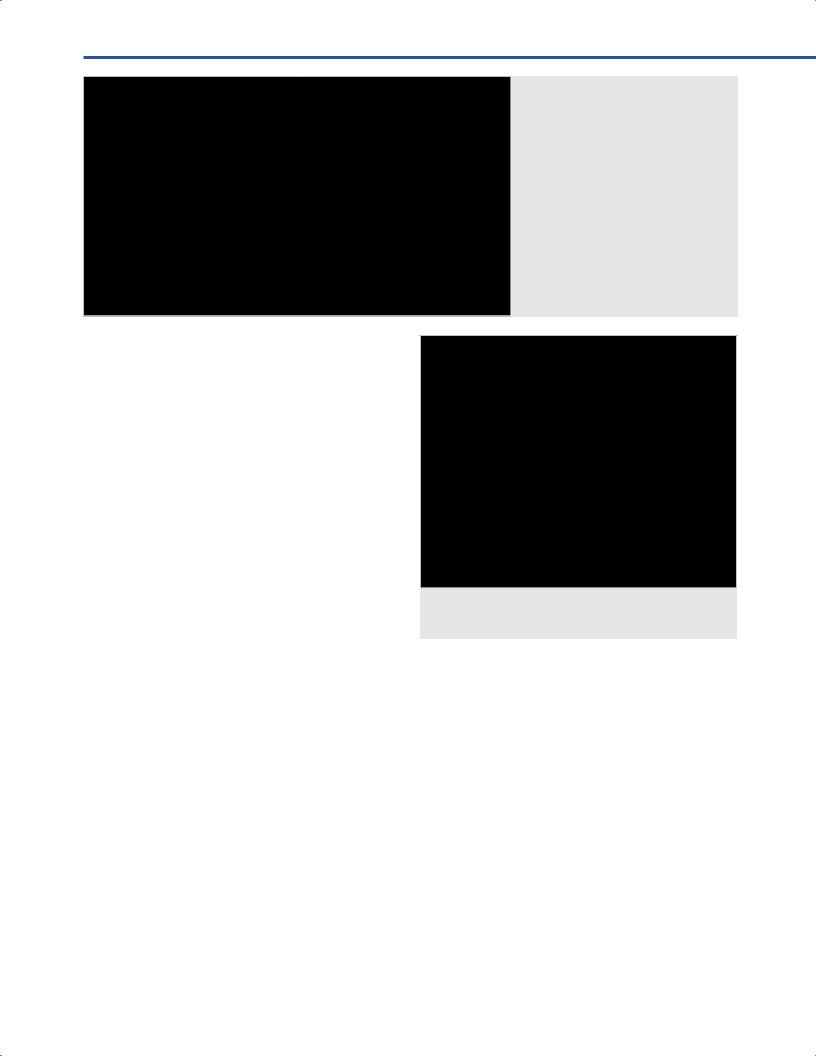
- •Operative Cranial Neurosurgical Anatomy
- •Contents
- •Foreword
- •Preface
- •Contributors
- •1 Training Models in Neurosurgery
- •2 Assessment of Surgical Exposure
- •3 Anatomical Landmarks and Cranial Anthropometry
- •4 Presurgical Planning By Images
- •5 Patient Positioning
- •6 Fundamentals of Cranial Neurosurgery
- •7 Skin Incisions, Head and Neck Soft-Tissue Dissection
- •8 Techniques of Temporal Muscle Dissection
- •9 Intraoperative Imaging
- •10 Precaruncular Approach to the Medial Orbit and Central Skull Base
- •11 Supraorbital Approach
- •12 Trans-Ciliar Approach
- •13 Lateral Orbitotomy
- •14 Frontal and Bifrontal Approach
- •15 Frontotemporal and Pterional Approach
- •16 Mini-Pterional Approach
- •17 Combined Orbito-Zygomatic Approaches
- •18 Midline Interhemispheric Approach
- •19 Temporal Approach and Variants
- •20 Intradural Subtemporal Approach
- •21 Extradural Subtemporal Transzygomatic Approach
- •22 Occipital Approach
- •23 Supracerebellar Infratentorial Approach
- •24 Endoscopic Approach to Pineal Region
- •25 Midline Suboccipital Approach
- •26 Retrosigmoid Approach
- •27 Endoscopic Retrosigmoid Approach
- •29 Trans-Frontal-Sinus Subcranial Approach
- •30 Transbasal and Extended Subfrontal Bilateral Approach
- •32 Surgical Anatomy of the Petrous Bone
- •33 Anterior Petrosectomy
- •34 Presigmoid Retrolabyrinthine Approach
- •36 Nasal Surgical Anatomy
- •37 Microscopic Endonasal and Sublabial Approach
- •38 Endoscopic Endonasal Transphenoidal Approach
- •39 Expanded Endoscopic Endonasal Approach
- •41 Endoscopic Endonasal Odontoidectomy
- •42 Endoscopic Transoral Approach
- •43 Transmaxillary Approaches
- •44 Transmaxillary Transpterygoid Approach
- •45 Endoscopic Endonasal Transclival Approach with Transcondylar Extension
- •46 Endoscopic Endonasal Transmaxillary Approach to the Vidian Canal and Meckel’s Cave
- •48 High Flow Bypass (Common Carotid Artery – Middle Cerebral Artery)
- •50 Anthropometry for Ventricular Puncture
- •51 Ventricular-Peritoneal Shunt
- •52 Endoscopic Septostomy
- •Index

36 Nasal Surgical Anatomy
Matteo Trimarchi, Salvatore Toma, Francesco Pilolli, and Mario Bussi
36.1 Operative Theater Setup (Fig. 36.1)
•Surgeon typically stands on the right side of the patient (if right-handed).
•Monitor and any intraoperative imaging devices are located facing the frst surgeon.
30°telescopes are the minimum equipment required for basic dissections.
•The right hand keeps the surgical instruments: straight and angled forceps, back-biting and down-biting forceps, straight and angled suctions, Cottle periosteal elevator, ostium seeker, sphenoid and frontal punch.
•Powered instruments (drill) can be useful for the sphenoid sinus dissection.
36.2 Patient Positioning
•Position: The patient is positioned supine.
•Body: The body lines 20° from the horizontal in anti-Trende- lenburg position.
•Head: The head is fexed 30° and rotated in the direction of the frst surgeon.
•Face is draped in order to expose forehead, eyes, nose, and upper lip.
36.3 Endoscopic Instrument
Employment (Fig. 36.2)
•The left hand is used to keep the telescope.
•Commercially available telescopes comprise zero-degree and angled view (30°, 45°, 70°, 120°). Zero-degree and
36.4 Exploration of Nasal Fossae
•At the beginning of surgical dissection, the tip of the telescope must be positioned at the nasoseptal angle, retracting the nasal tip cranially.
•The telescope is then directed toward the occipital area in order to progressively visualize
○Nasal foor.
○Inferior turbinate.
○Nasopharynx.
•A 30° telescope is placed in the middle meatus and rotated to identify
○Uncinate process.
○Bulla ethmoidalis.
○Middle turbinate axilla.
○Frontal recess.
Fig. 36.1 Setup of the operative theatre.
221

VEndonasal, Transoral, and Transmaxillary Procedures
•Zero-degree telescope is useful to identify the sphenoid ostium and the spheno-ethmoidal recess.
36.5 Opening of Maxillary Sinus
•Before starting the surgical dissection, the surgeon must identify fundamental anatomical landmarks such as the inferior turbinate, the head of the middle turbinate and its attachment to the maxillary bone (axilla of the middle turbinate), the nasal septum, and the uncinate process.
•The uncinate process is a C-shaped process of the ethmoid bone, which represents a small part of the medial wall
of the maxillary sinus posteriorly to the lacrimal bone, and articulates with the axilla of the middle turbinate
(Fig. 36.3).
•The maxillary sinus ostium is found within the concavity designed by the uncinate process, using the ostium seeker. The natural ostium is sloped 45°on the axial plane, and it is perpendicular to the coronal plane.
•The ostium must be enlarged using back-biting and down-biting forceps in order to remove the caudal part of the uncinate process (Fig. 36.4), taking care to preserve the cranial part as an important anatomical landmark for the frontal recess. The surgeon should avoid injuries to the lacrimal canal. If needed, the ostium can be enlarged posteriorly, using straight forceps (Fig. 36.4).
•Thirty-degree and 45°telescopes allow the exploration of the maxillary sinus including the alveolar as well as
infra-orbitary recess, which can be visualized in the roof of the maxillary sinus (Figs. 36.5, 36.6).
Fig. 36.2 Surgical instruments required for basic nasal endoscopic dissection.
Fig. 36.3 Partial uncinectomy.
Abbreviations: BE = bulla ethmoidalis; MT = middle turbinate; S = septum; UP = uncinate process.
36.6 Opening of the Anterior
Ethmoidal Complex
•The pneumatization of the ethmoid labyrinth might present a wide variability, except for the ethmoidal bulla, which is constantly represented. It is the most anterior pneumatized cell in the middle meatus, and it is located postero-medially to the uncinate process; its cranial and
222

36 Nasal Surgical Anatomy
posterior walls can be either in continuity with the middle turbinate or separated from it by the sovrabullar/retrobullar recess.
•The safe opening of the ethmoidal bulla should be performed starting medially and inferiorly (Figs. 36.7, 36.8), keeping
in mind that the lateral wall of the bulla corresponds to the lamina papyracea of the orbit, and avoiding injuries to the anterior ethmoidal artery.
Fig. 36.4 Antrostomy: opening of the maxillary ostium. Abbreviations: BE = bulla ethmoidalis; MO = maxillary ostium; MT = middle turbinate; UP = uncinate process.
36.7 Opening of Posterior
Ethmoidal Complex
•The basal lamella of the middle turbinate divides the anterior ethmoidal cells from the posterior ones. Surgeons must identify the midpoint between the nasal septum and the medial wall of the orbit on a horizontal plane, passing through the
Fig. 36.5 Antrostomy: anatomic landmarks of maxillary sinus. Abbreviations: BE = bulla ethmoidalis; IN = infra-orbital nerve; MS = maxillary sinus.
Fig. 36.6 Neuronavigation probe touching the tubercle of the infraorbitary nerve.
223

VEndonasal, Transoral, and Transmaxillary Procedures
Fig. 36.7 Opening of the ethmoidal bulla. Surgical view. Abbreviations: BE = bulla ethmoidalis; MT = middle turbinate; S = septum.
orbital foor, which represents the safe entry zone to the posterior ethmoidal cells.
•The accurate evaluation of the CT images is important in order to open all pneumatized cells of the ethmoidal complex, taking care not to damage the skull base, the lamina papyracea and the posterior ethmoidal artery
(Fig. 36.9).
36.8 Opening of Sphenoid Sinus
•The sphenoid ostium (Figs. 36.10, 36.11) is located 16-27 mm from the supero-lateral angle of the posterior choana, 2-8 mm from the midline, just medial to the tail of the superior and supreme turbinate.
•The opening of sphenoid sinus can be performed either through the sphenoethmoidal recess, or by performing an ethmoidectomy.
•The ostium might be safely enlarged medially and caudally, where septal branches of the spheno-ethmoidal artery are usually found.
Fig. 36.8 Opening of the ethmoidal bulla.
Neuronavigation seeker on the ostium.
224

36 Nasal Surgical Anatomy
Fig. 36.9 Opening of the posterior ethmoidal complex. Abbreviations: BL = basal lamella; MT = middle turbinate.
Fig. 36.10 Sphenoid sinus opening.
Abbreviations: S = septum; SSO = sphenoid sinus ostium; ST = superior turbinate.
Fig. 36.11 Neuronavigated instrument demonstrating the physiological ostium of sphenoid sinus.
225

VEndonasal, Transoral, and Transmaxillary Procedures
•At this point, the entire anterior wall of the sphenoid sinus can be removed.
•The bony septum dividing the sphenoid sinuses can be safely drilled.
•On the posterior and lateral walls, the surgeon can appreciate the carotid protuberances, the clival recess, the medial opticocarotid recesses, the lateral opticocarotid recesses, the optic protuberances, and the sellar foor (Figs. 36.12, 36.13).
36.9 Opening of the Frontal Sinus
•The frontal sinus might present a complex and variable drainage, which is usually shaped like an hourglass: the upper portion is the frontal sinus, the lower portion is formed by the frontal recess and the narrowest portion corresponds to the frontal ostium.
Fig. 36.12 Posterior wall of the sphenoid sinus after removal of the inter-sinusal bone.
Abbreviations: ICA = internal carotid artery; ISS = inter-sinusal l septum; ON = optic nerve; P = pituitary gland.
Fig. 36.13 Endoscopic view after removal of all the posterior wall of the sphenoid sinus and opening of the dura mater.
Abbreviations: ACA = anterior cerebral artery; ICA = internal carotid artery; OC = optic chiasm; ON = optic nerve; P = pituitary gland.
•The frontal drainage is surrounded anteriorly either by the agger nasi or by the frontal infundibular cells, laterally by the orbital roof, the lamina papyracea and the uncinate process, posteriorly by the suprabullar cells, and medially by the vertical lamella of the middle turbinate.
•The correct access to the frontal recess must be found supero-medially, just adjacent to the vertical lamella of the middle turbinate, and slightly posterior to the uncinate process.
•In a case in which the agger nasi is present, the surgeon must remove its posterior and medial walls, to gain access to the frontal sinus.
•CT scan may reveal the presence of frontal cells, which are ethmoidal cells that are encroached into the frontal sinus.
If these cells are present, the surgeon has to remove all the bone between them (“uncapping the eggs”) (Figs. 36.14,
36.15).
Fig. 36.14 Frontal sinus opening.
Abbreviations: FR = frontal recess; MT = middle turbinate; UP = uncinate process.
226

36 Nasal Surgical Anatomy
References
1.Badia L, Lund VJ, Wei W, Ho WK. Ethnic variation in sinonasal anatomy on CT-scanning. Rhinology 2005;43(3):210– 214.
2.Comer BT, Kincaid NW, Smith NJ, Wallace JH, Kountakis SE.
Frontal sinus septations predict the presence of supraorbital ethmoid cells. Laryngoscope 2013;123(9):2090–2093.
3.Daniels DL, Mafee MF, Smith MM, et al. The frontal sinus drainage pathway and related structures. AJNR Am J Neuroradiol 2003;24(8):1618–1627.
4.El-Shazly AE, Poirrier AL, Cabay J, Lefebvre PP. Anatomical variations of the lateral nasal wall: The secondary and accessory middle turbinates. Clin Anat 2012;25(3):340–346.
5.Han D, Zhang L, Ge W, Tao J, Xian J, Zhou B. Multiplanar computed tomographic analysis of the frontal recess region in Chinese subjects without frontal sinus disease symptoms.
ORL J Otorhinolaryngol Relat Spec 2008;70(2):104–112.
6.Jankowski R. The Evo-Devo Origin of the Nose, Anterior Skull Base and Midface: Springer;2013.
Fig. 36.15 Neuronavigation probe inside the frontal sinus.
7.Lund VJ, Stammberger H, Fokkens WJ, et alEuropean position paper on the anatomical terminology of the internal nose and paranasal sinuses. 2014;24:1-34.
8.Simmen D, Raghavan U, Briner HR, et al. The surgeon’s view of the anterior ethmoid artery. Clin Otolaryngol 2006; 31(3):187–191.
9.Simmen D, Jones NS. Manual of Endoscopic Sinus and Skull Base Surgery: Thieme;2013.
10.Kennedy DW; Anatomic Terminology Group. Paranasal sinuses:anatomic terminology and nomenclature. Ann Otol
Rhinol Laryngol Suppl 1995;167:7–16.
11.H, Lund V. Anatomy of the nose and paranasal sinuses. In: Gleeson M, Browning GG, Burton MJ, al e, editors. ScottBrown’s Otorhinolaryngology, Head and Neck Surgery. 2. 7th ed. London: Hodder Arnold;2008:1315-43.
12.Wormald PJ. The agger nasi cell: the key to understanding the anatomy of the frontal recess. Otolaryngology–head and neck surgery : ofcial journal of American Academy of Otolaryngology-. Head Neck Surg 2003;129 (5):497–507.
227
